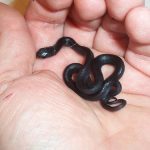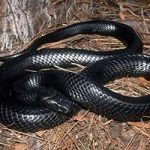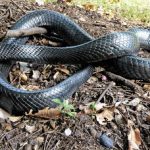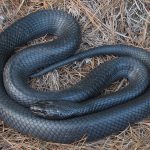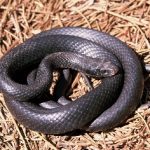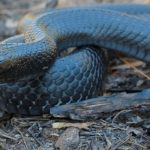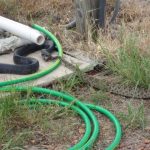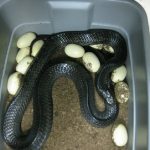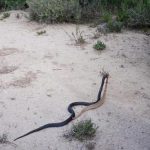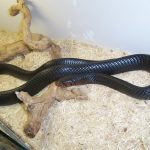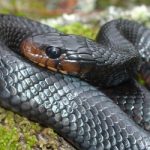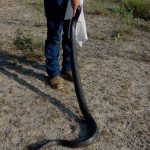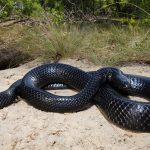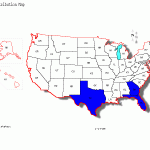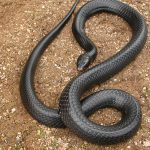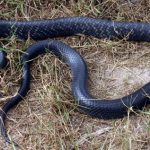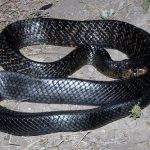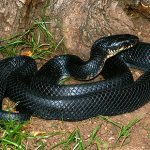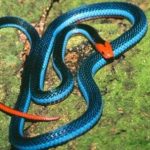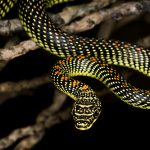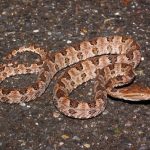Indigo Snake
Indigo snake is a species of nonvenomous snake belonging to the colubrid family, found only in the eastern United States. The carnivorous species derives its name from its iridescent underside. It happens to be the longest native snake species in the United States. The species is very popular in the pet trade.
| Kingdom | Animalia |
| Phylum | Chordata |
| Subphylum | Vertebrata |
| Class | Reptilia |
| Order | Squamata |
| Family | Colubridae |
| Subfamily | Colubrinae |
| Genus | Drymarchon |
| Scientific Name | Drymarchon couperi |
| Other Names | Indigo, blue indigo snake, blue gopher snake, black snake, blue bull snake |
| Length | Male: 1.2–2.36 m (3.9–7.7 ft) Female: 1.1–2 m (3.6–6.6 ft) |
| Weight | Male: 0.72–4.5 kg (1.6–9.9 lb) Female: 0.55–2.7 kg (1.2–6.0 lb) |
| Color | Generally blue-black outer surface and flanks with some individuals exhibiting reddish-orange to tan on the cheeks, chin and throat |
| Distribution | Southern South Carolina, Florida, Louisiana, Mississippi, Alabama |
| Habitat | Flatwoods, hammocks, stream bottoms, dry glades, riparian thickets, cane fields |
| Diet | Turtles, lizards, frogs, toads, small birds and mammals, eggs |
| Hibernation Fact | Do not hibernate |
| Venom Fact | Nonvenomous |
| Breeding Season | November to April (mating season); May to June (egg laying) |
| Mode of Reproduction | Oviparous (egg laying) |
| Clutch Size | 5 to 6 eggs |
| Incubation Period | About 3 months |
| Reproductive Age | 3 to 4 years of age |
| Average Lifespan | 12 to 21 years (in wild); 16 to 25 years (in captivity) |
| IUCN Conservation Status | Least Concern |
Indigo Snake Pictures Gallery
- Baby Indigo Snake
- Black Indigo Snake
- East Indigo Snake
- Eastern Indigo Snake
- Indigo Black Snake
- Indigo Blue Snake
- Indigo Snake Belly
- Indigo Snake Eating Rattlesnake
- Indigo Snake Eggs
- Indigo Snake Habitat
- Indigo Snake Pet
- Indigo Snake Photos
- Indigo Snake Pics
- Indigo Snake Pictures
- Indigo Snake Range
- Indigo Snake
- Indigo Snakes
- Texas Indigo Snake
- Drymarchon


